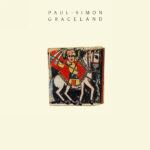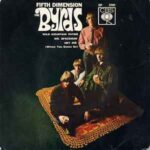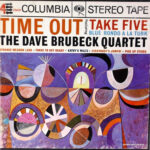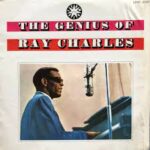 Paul Simon’s “Graceland,” released in 1986, stands as a landmark album that defied genres, broke boundaries, and introduced the world to the captivating sounds of South African music. A fusion of pop, rock, folk, and traditional African rhythms, the album remains a timeless masterpiece that showcases Simon’s musical genius and his ability to create vibrant and socially conscious music.
Paul Simon’s “Graceland,” released in 1986, stands as a landmark album that defied genres, broke boundaries, and introduced the world to the captivating sounds of South African music. A fusion of pop, rock, folk, and traditional African rhythms, the album remains a timeless masterpiece that showcases Simon’s musical genius and his ability to create vibrant and socially conscious music.
“Graceland” opens with the infectious and instantly recognizable “The Boy in the Bubble,” setting the stage for the eclectic and uplifting journey that lies ahead. The album’s sound is characterized by its rich textures, layered instrumentation, and impeccable production. Simon’s intricate songwriting and heartfelt storytelling shine through each track, capturing the listener’s attention from the first note.
One of the album’s highlights is the title track, “Graceland.” With its upbeat rhythms, joyful harmonies, and Simon’s introspective lyrics, the song is a celebration of music, travel, and personal transformation. The track perfectly encapsulates the spirit of the album, blending Simon’s introspective songwriting with the infectious grooves and uplifting melodies of South African music.
Another standout track is “Diamonds on the Soles of Her Shoes,” a collaboration with Ladysmith Black Mambazo that beautifully blends Simon’s songwriting with the group’s enchanting harmonies. The song’s infectious rhythms, soaring vocals, and intricate guitar work create a mesmerizing musical tapestry that is both soulful and uplifting.
Lyrically, “Graceland” explores a wide range of themes, including love, loss, cultural identity, and social issues. Simon’s poignant storytelling and introspective observations provide a window into the human experience, offering profound and thought-provoking perspectives. Tracks like “Under African Skies” and “Homeless” tackle themes of unity and inequality, reflecting Simon’s exploration of the social and political landscape of South Africa at the time.
“Graceland” is a testament to Simon’s commitment to collaboration and his willingness to embrace new sounds and cultures. The album features numerous South African musicians, including Ladysmith Black Mambazo, who lend their unique talents to create a truly immersive musical experience. Simon’s openness to embracing different musical traditions and his respect for the artists he collaborated with result in a fusion of styles that feels authentic and organic.
The production on “Graceland” is polished and meticulous, with each instrument and vocal harmonization standing out in the mix. The album’s pristine sound quality allows the nuances of the intricate arrangements to shine through, showcasing the depth and beauty of the compositions.
“Graceland” was not only critically acclaimed but also commercially successful, becoming one of Simon’s most popular and beloved albums. Its impact on music cannot be overstated, as it introduced the world to the richness and diversity of South African music and helped bridge cultural gaps. The album’s legacy continues to inspire artists and listeners alike, serving as a testament to the power of music to transcend boundaries and connect people from different cultures.
In conclusion, Paul Simon’s “Graceland” is a musical masterpiece that seamlessly blends genres, cultures, and styles. With its infectious melodies, thought-provoking lyrics, and masterful collaborations, the album remains a shining example of Simon’s artistic vision and his ability to create music that resonates on a global scale. “Graceland” stands as a timeless gem in the world of music, encapsulating the beauty and power of cultural exchange and creativity.
This post has already been read 83 times!

























